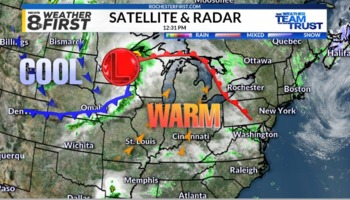Earth/Space ActivInspire Lesson I & II "Weather & Weather Patterns"
- Flipchart File
Description
This ActivInspire program reviews terms and concepts covered in Unit X lessons I & II on "Weather." 20 questions include multiple choice; true/false and numeric entries. ActivInspire review questions are based off the two PowerPoint lessons in Unit X "Weather." A PDF student worksheet/study guide can also be generated as a handout by using this program.
Terms/concepts in these lessons include:
weather, atmosphere, temperature, wind, air pressure, humidity, relative humidity, temperature scales, Fahrenheit, Celsius, Kelvin, weather vane, anemometer, dew point, cloud formation, water droplets, particulates, stratus, fog, cumulus, cirrus, cirro, alto, strato, nimbus, cumulonimbus, weather, air masses, air mass movement, high pressure systems, low pressure systems, cyclones, anti-cyclones, barometer, fronts, cold front, warm front, occluded front, stationary front, thunderstorms, cumulonimbus, lightning, thunder, tornado, updrafts, wind shear, funnel clouds, hail, Fujita scale, hurricanes, Saffir-Simpson scale, blizzard, National Weather Service (NWS), watches, warnings, severe weather
astronomydad


